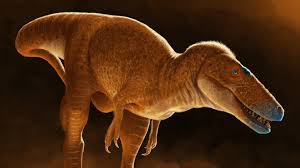Khankhuuluu Mongoliensis:

Scientists have confirmed that Khankhuuluu mongoliensis, dubbed the “Dragon Prince”, lived around 86 million years ago—approximately 20 million years before T. rex.
- Khankhuuluu mongoliensis, whose name translates to “Dragon Prince of Mongolia,” roamed the Earth approximately 86 million years ago during the Cretaceous period.
- The fossils of this new species were actually found in the 1970s in Mongolia’s Gobi Desert but were only recently recognized as belonging to a distinct species after advanced analysis and reexamination.
- This medium-sized, fleet-footed predator weighed about 750 kilograms (roughly the size of a horse) and measured up to 4 meters in length, making it two to three times smaller than its massive descendants like Tyrannosaurus rex.
- The species is characterised by a long, shallow skull, tiny rudimentary horns, and a lighter, more agile build compared to later tyrannosaurs.
- Unlike the bone-crushing T. rex, Khankhuuluu was a mesopredator, relying on speed and agility to hunt smaller prey.
- This prehistoric predator is now considered the closest-known ancestor to the Tyrannosaurus rex and played a pivotal role in setting tyrannosaurs on the evolutionary path to ruling Earth as apex predators.
- Khankhuuluu marks a crucial evolutionary transition from smaller, agile hunters to the colossal apex predators that dominated the late Cretaceous.
- Its discovery has bridged a significant gap in the fossil record, revealing that tyrannosaurs originated in Asia and migrated to North America, where they evolved into the iconic T. rex.




